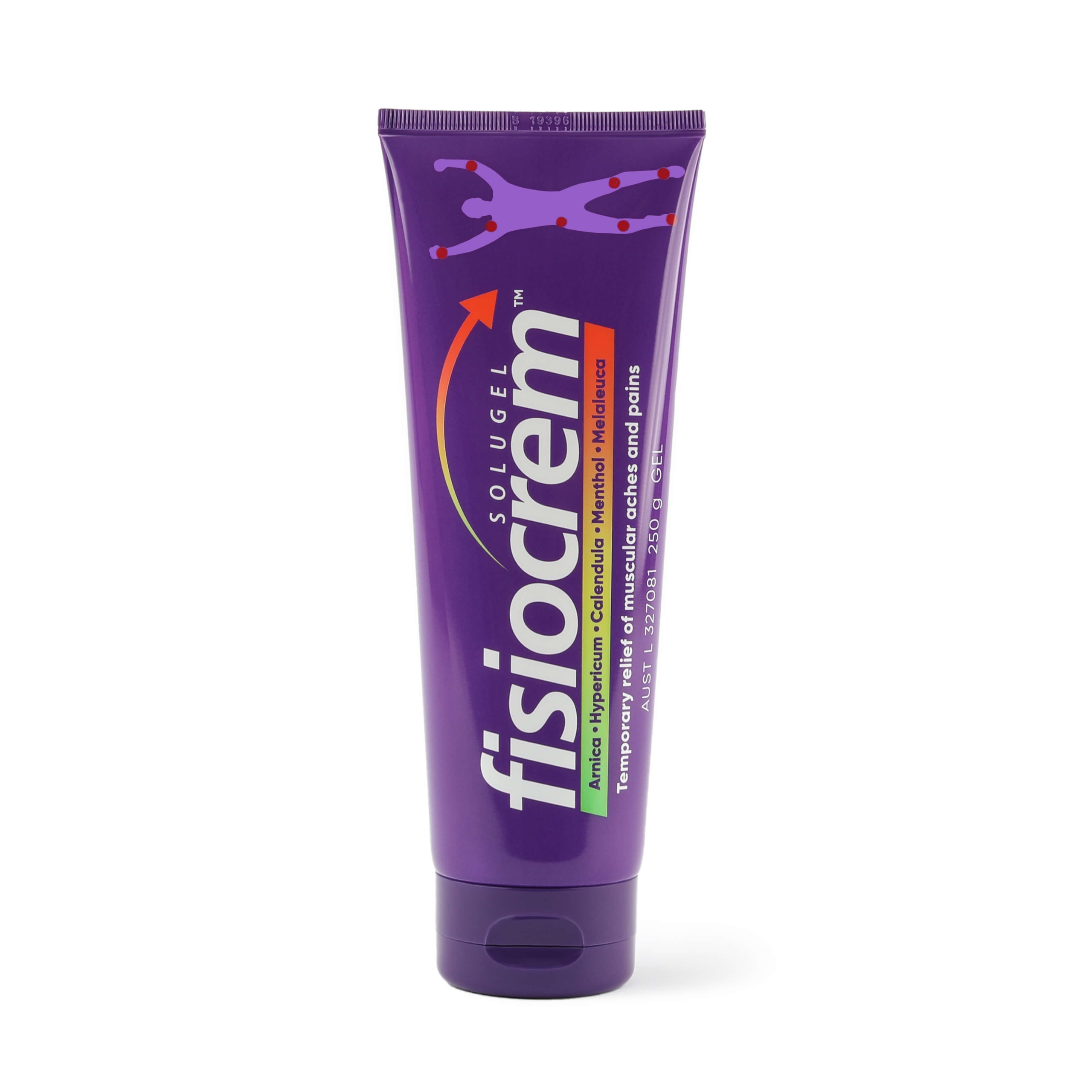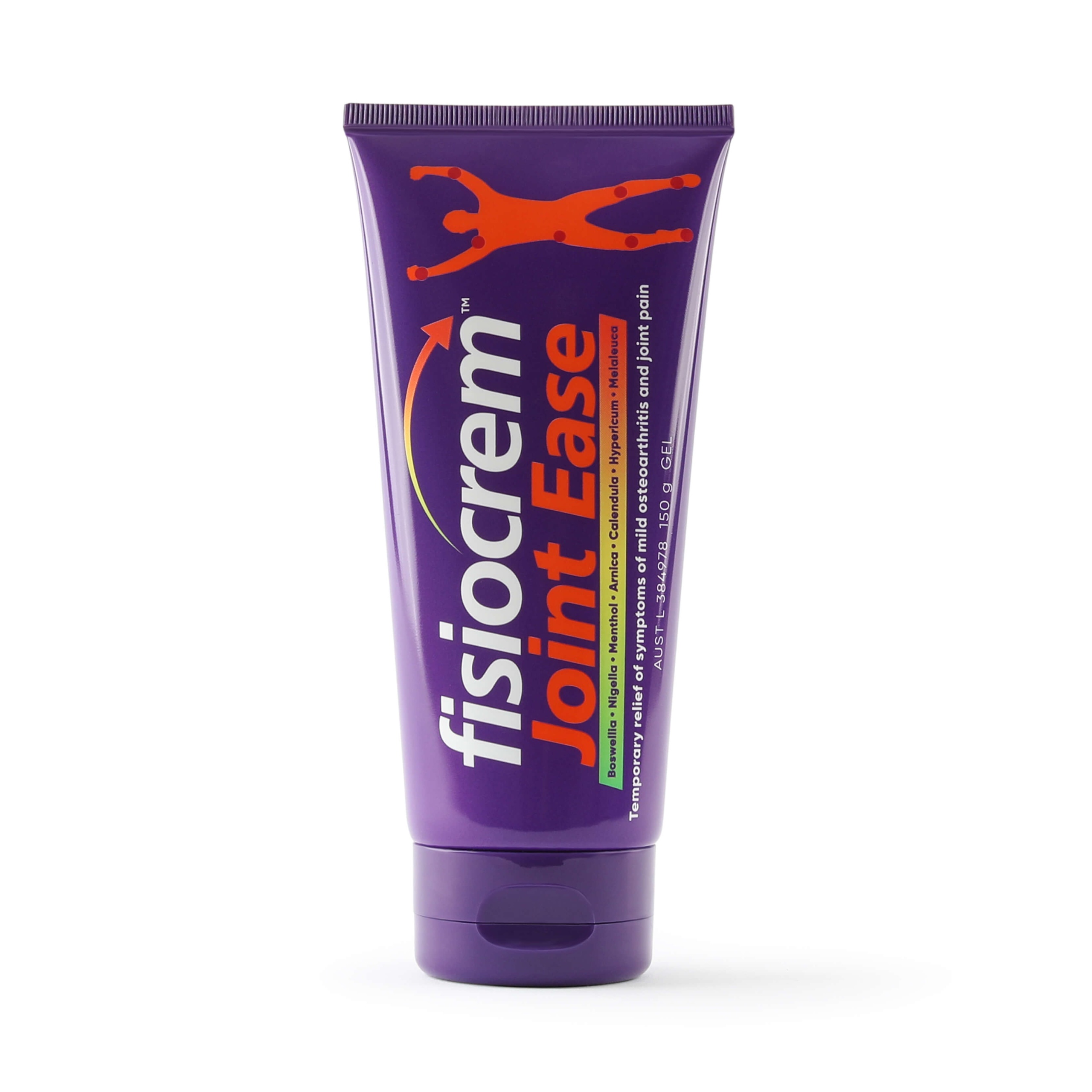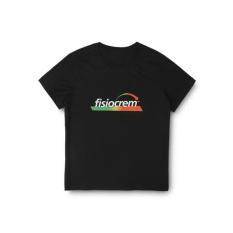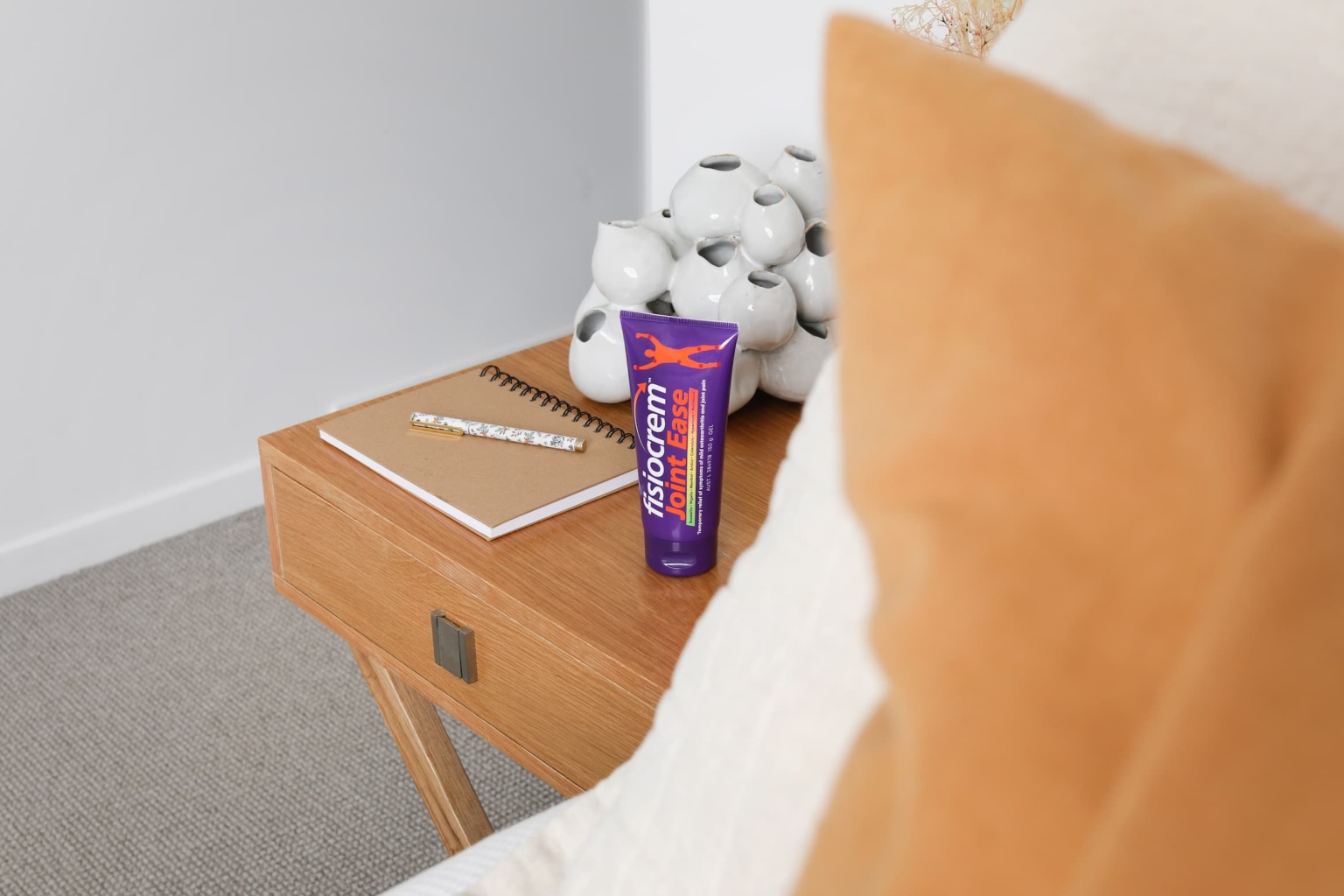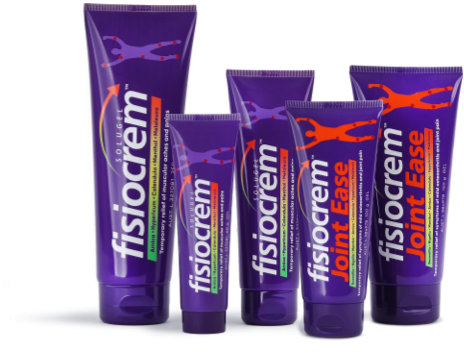Mild osteoarthritis (OA) is frequent and is the leading cause of persistent musculoskeletal pain. It is a common degenerative disease that affects millions of people with symptoms ranging from joint pain, stiffness to inactivity and swelling (Kidd, B. 2006)
Within this article, we will look at what mild OA is, what causes it, and how to treat it effectively. We will look at areas commonly affected by mild OA, for example, the knees, hips, and fingers. We will discuss exercises that can help reduce pain and stiffness associated with mild OA.
*fisiocrem Joint ease is for the temporary relief of symptoms associated with mild forms of OA.
What is mild osteoarthritis?
Mild osteoarthritis is the most common type of mild arthritis and is a type of mild arthritis that causes joint pain and impairs movement. Mild osteoarthritis occurs due to a breakdown of cartilage between bones and joint inflammation (Yue, L., & Berman, J. 2022).
This gradual breakdown of cartilage leads to joint pain, stiffness, and reduced mobility and can affect any joint in the body. The most common joints affected are the knees, hips, feet, and hands.
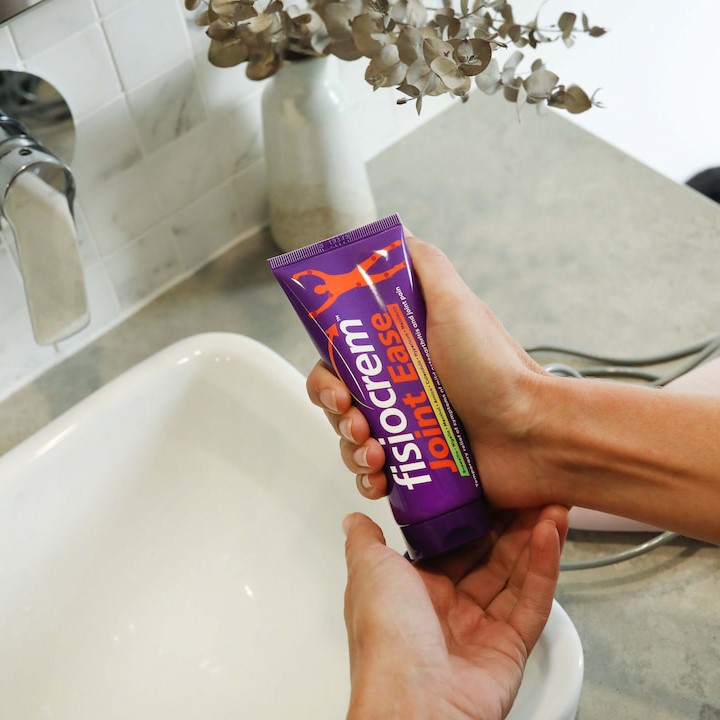
What causes mild osteoarthritis?
While the exact cause of mild osteoarthritis is unknown, several factors can contribute to its development. These include:
- Age: mild osteoarthritis is more common in older people. Over time, the joints can suffer wear and tear, which can lead to the onset of mild osteoarthritis (Yue, L., & Berman, J. 2022).
- Joint injury: Previous joint injury such as a ligament tear in the knee joint or an ankle fracture can increase the risk of developing mild OA later in life (Lohmander, S. 2000).
- Genetics: Certain genetic factors can make individuals more susceptible to mild OA. The prevalence of mild osteoarthritis increases for people of the female sex (Lohmander, S. 2000).
- Obesity: Excess weight puts additional stress on the joints, particularly weight-bearing joints such as the knees and hips. Weight can accelerate the degeneration of cartilage (Yue, L., & Berman, J. 2022).
Mild osteoarthritis symptoms
Mild osteoarthritis can cause both substantial physical and psychosocial disability (Hunter, D., McDougall, J., & Keefe, F. 2008). Therefore recognising the symptoms of mild osteoarthritis is crucial for early detection and effective management
Common symptoms include:
- Joint Pain: Persistent pain is the most predominant symptom and sign of mild OA (Hunter, D., McDougall, J., & Keefe, F. 2008). Pain in the affected joints may increase with movement or after prolonged periods of inactivity (Yue, L., & Berman, J. 2022).
- Joint stiffness is common, particularly in the morning. It usually lasts less than 30 minutes or after periods of rest (Sinusas, K. 2012).
- Range of motion is limited: Moving the affected joint can be difficult, causing reduced flexibility and mobility. This can lead to disability in everyday activities (Sinusas, K. 2012).
- Swelling: Mild to moderate swelling around the joint area (Bijlsma, J., Berenbaum, F., & Lafeber, F. 2011).
- Joint Grating Sensation: A grating or crackling sound during joint movement, known as crepitus (Bijlsma, J., Berenbaum, F., & Lafeber, F. 2011).
*fisiocrem Joint ease is for the temporary relief of symptoms associated with mild forms of mild osteoarthritis.
Mild osteoarthritis Treatment
While there is no cure for mild osteoarthritis there are several treatment options. These treatment options can help to reduce and manage the symptoms of mild osteoarthritis whilst improving joint function. These treatment options aim to improve the quality of life for individuals with this condition. These include:
- Weight loss and lifestyle changes: Dietary modifications and exercise can lead to significant weight loss. This, in turn, can reduce joint pain and improve joint function (Yue, L., & Berman, J. 2022).
- Physical therapy: Physical therapy can also provide guidance on exercises to improve joint strength and flexibility.
- Regular exercise: exercise helps ease mild arthritis pain and stiffness. Get moving with mild Arthritis moves exercises.
Keeping active is vital for people living with mild osteoarthritis. Learn more about a 12-week virtual exercise program to help people stay motivated. The program provides safe exercises, such as those for mild knee arthritis. Additionally, it offers resources and support.
The above treatment options help to build muscle strength, reduce the stress placed on joints and improve functional movement (Yue, L., & Berman, J. 2022).
- Topical pain relief creams: Mild osteoarthritis self-care treatments like over-the-counter pain relievers, can help alleviate pain and reduce inflammation.
*fisiocrem Joint ease is for the temporary relief of symptoms associated with mild forms of OA.
Other treatment options can include:
- Assistive Devices: The use of assistive devices, such as braces, can help support the affected joint and reduce pain during movement.
- Alternative Therapies: Some individuals find relief through complementary and alternative therapies, such as acupuncture or massage
Mild Knee Osteoarthritis
Mild knee osteoarthritis is a prevalent form of mild osteoarthritis that affects the knee joints. It can significantly impact a person’s daily life and overall well-being. There are various strategies to manage mild knee osteoarthritis and improve the condition such as regular exercise tailored specifically for the knees.
Engaging in targeted exercises can help strengthen the muscles surrounding the knee joint, improve flexibility, and alleviate pain and stiffness. Examples of exercises beneficial for mild knee osteoarthritis include low-impact activities like walking, swimming, and cycling.
Additionally, stretching exercises, such as quadriceps and hamstring stretches, can help increase joint flexibility. Consult with a healthcare professional or qualified physical therapist before starting any exercise regimen. This will ensure the regimen is appropriate for your specific condition. With proper care and exercise, individuals with mild knee osteoarthritis can enhance their quality of life and regain mobility.
Hips
Mild Osteoarthritis in the hip joint can be a source of significant discomfort and limitation. The degenerative nature of mild hip osteoarthritis leads to pain, stiffness, and reduced range of motion in the hip area.
Maintaining a healthy weight can help reduce stress on the hip joint. Regular low-impact exercises such as swimming or gentle stretching can improve joint flexibility and strengthen the muscles around it. Assistive devices like canes and walkers can provide extra support and reduce strain on the hip during daily activities. This can make activities easier and more comfortable.
Fingers
Mild osteoarthritis also affects the delicate joints of the fingers, leading to discomfort, stiffness, and diminished hand function. Dealing with mild osteoarthritis in the fingers requires proactive management strategies to alleviate symptoms and maintain hand mobility.
A primary approach is to engage in exercises designed to improve finger strength. These exercises may include finger bends, squeezing stress balls, or using hand grippers.
fisiocrem Joint Ease
For mild osteoarthritis
fisiocrem Joint Ease has been formulated for use in mild forms of osteoarthritis. fisiocrem Joint Ease contains menthol and naturally-derived active ingredients of Boswellia, nigella, arnica, calendula, hypericum, and melaleuca.
fisiocrem Joint Ease is an innovative, discreet, low-odour topical gel that helps to rapidly relieve pain. Our topical pain relief helps to improve inflammation and stiffness, symptoms associated with mild osteoarthritis.
fisiocrem Joint Ease is easy to-apply, non-greasy, non-heat formulation. It is designed to provide ongoing joint comfort and helps to provide mild arthritis pain relief by:
- Helping to promote healthy joint function
- Relieve mild joint pain, soreness, and stiffness
- Maintain joint mobility and flexibility
- Supports body tissue repair

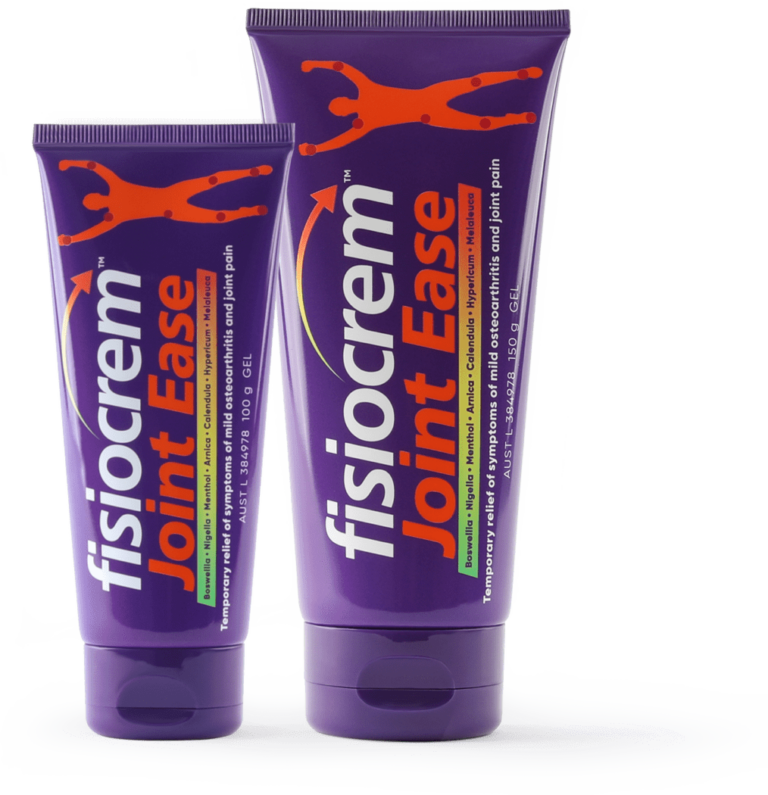
Shop this topical mild osteoarthritis cream Australia-wide.
fisiocrem Joint Ease available in 100g and 150g.
When applying fisiocrem Joint Ease, apply a few grams to the affected area 3 to 4 times daily, or as required. Massage fisiocrem Joint Ease in as required.
Always read the label and follow the directions for use.
Citations
- Bijlsma, J., Berenbaum, F., & Lafeber, F. (2011). The Lancet, 377(9783), 2115-2126.
- Hunter, D., McDougall, J., & Keefe, F. (2008). Rheumatic Disease Clinics Of North America, 34(3), 623-643.
- Kidd, B. (2006). Pain, 123(1), 6-9.
- Lohmander, S. (2000). Arthritis research & therapy, (95).
- Sinusas, K. (2012). Am Fam Physician, 85(1):49-56
- Yue, L., & Berman, J. (2022). JAMA, 327(13), 1300.

